
LOADING ...
In response to evolving domestic opinion, eMedals Inc has made the conscious decision to remove the presentation of German Third Reich historical artifacts from our online catalogue. For three decades, eMedals Inc has made an effort to preserve history in all its forms. As historians and researchers, we have managed sensitive articles and materials with the greatest of care and respect for their past and present social context. We acknowledge the growing sentiments put forth by the Canadian public and have taken proactive actions to address this opinion.
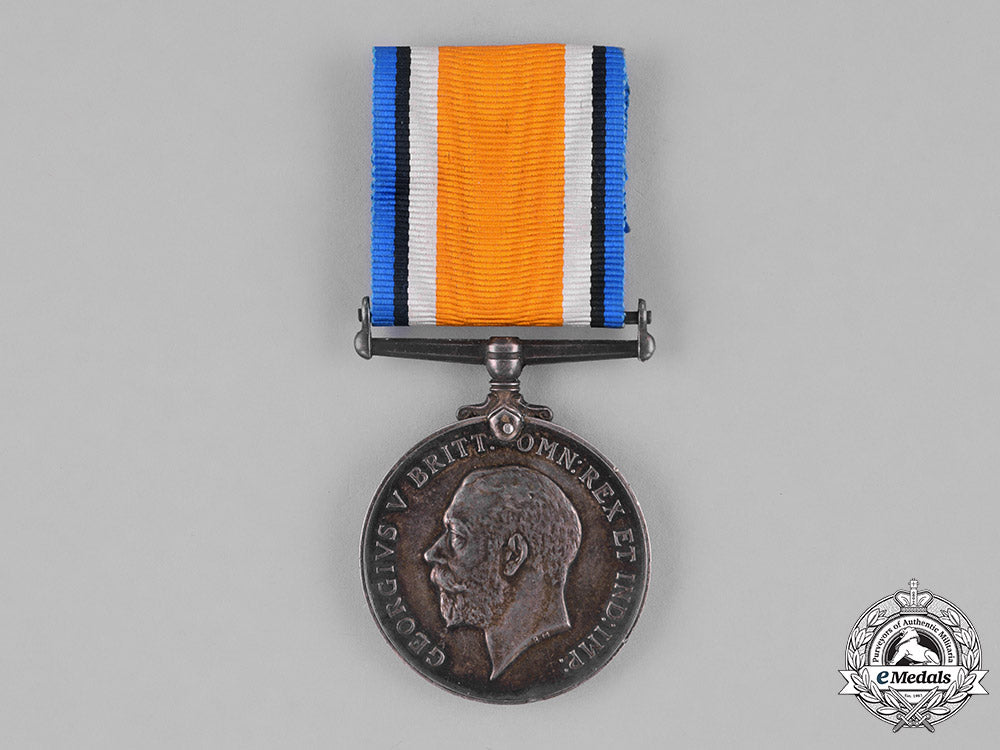
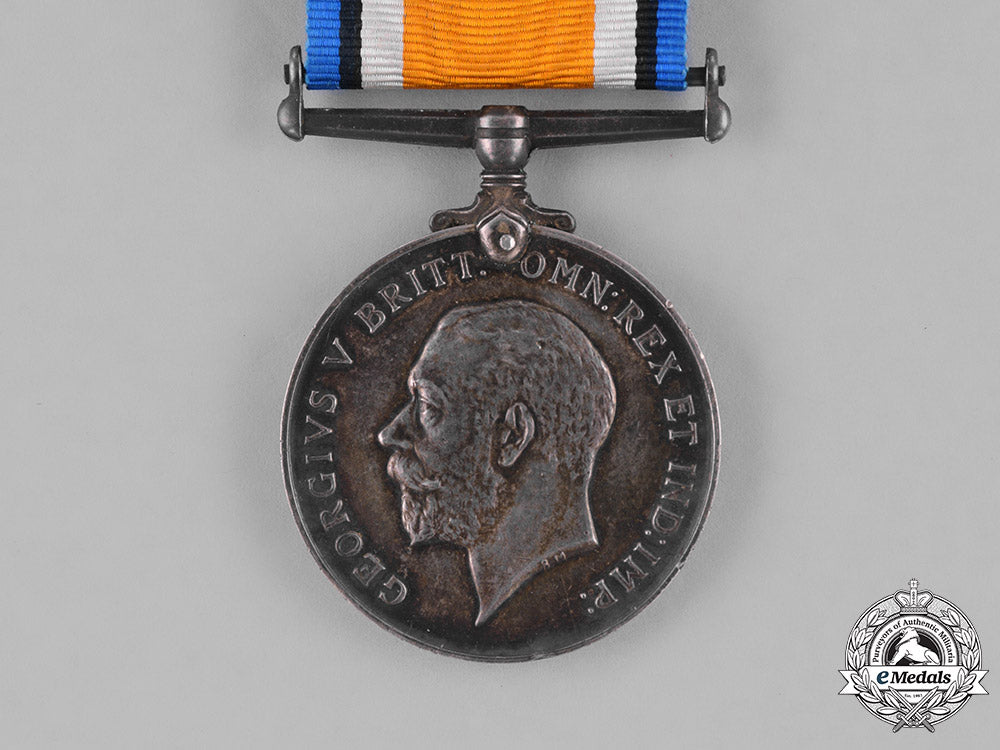
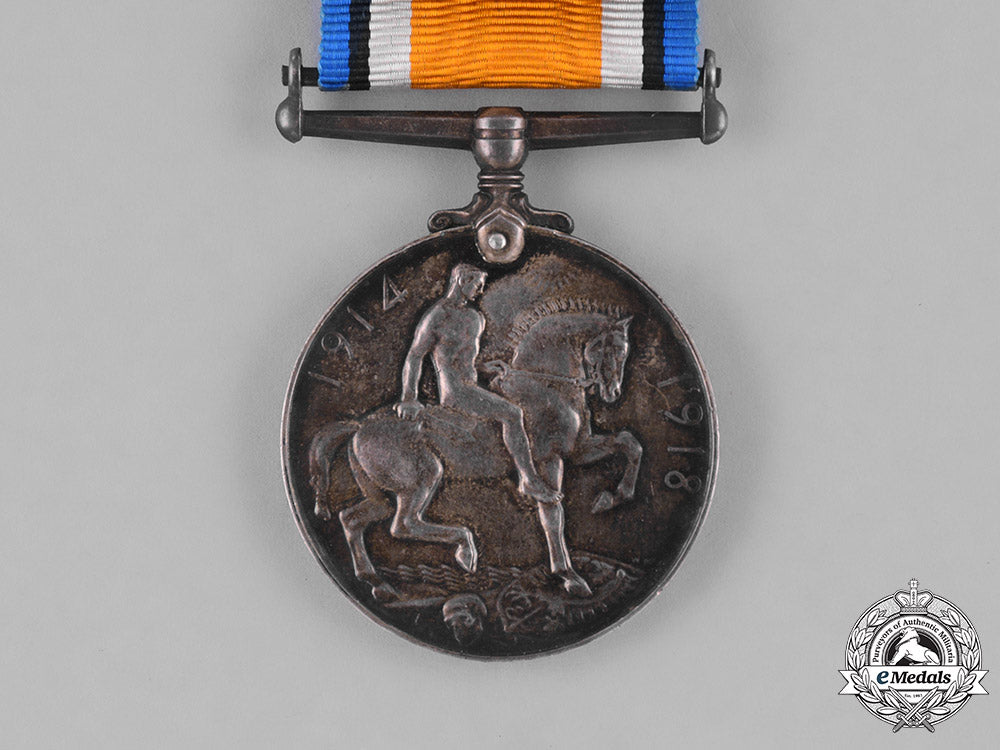
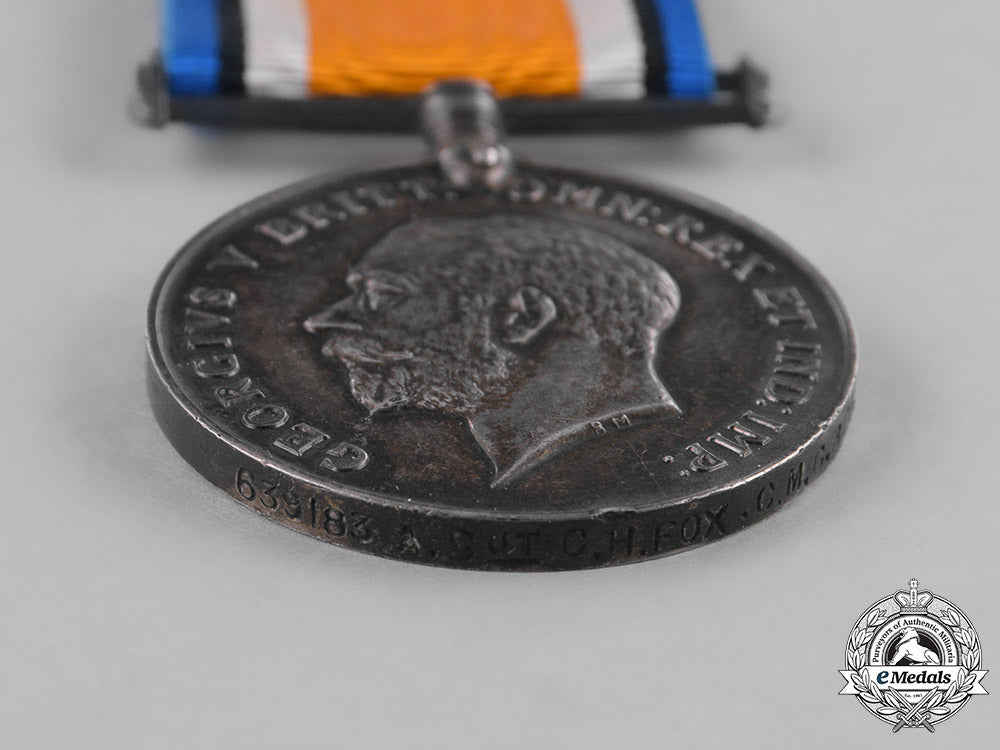
Canada. A British War Medal, To Acting Sergeant Charles Henry Fox, 156Th Infantry Battalion, Canadian Machine Gun Brigade
Canada. A British War Medal, To Acting Sergeant Charles Henry Fox, 156Th Infantry Battalion, Canadian Machine Gun Brigade
SKU: ITEM: C5538
Current Bid:
Your Max Bid:
Bid History:
Time Remaining:
Couldn't load pickup availability
Shipping Details
Shipping Details
eMedals offers rapid domestic and international shipping. Orders received prior to 12:00pm (EST) will be shipped on the same business day.* Orders placed on Canadian Federal holidays will be dispatched the subsequent business day. Courier tracking numbers are provided for all shipments. All items purchased from eMedals can be returned for a full monetary refund or merchandise credit, providing the criteria presented in our Terms & Conditions are met. *Please note that the addition of a COA may impact dispatch time.
Shipping Details
eMedals offers rapid domestic and international shipping. Orders received prior to 12:00pm (EST) will be shipped on the same business day.* Orders placed on Canadian Federal holidays will be dispatched the subsequent business day. Courier tracking numbers are provided for all shipments. All items purchased from eMedals can be returned for a full monetary refund or merchandise credit, providing the criteria presented in our Terms & Conditions are met. *Please note that the addition of a COA may impact dispatch time.
Description
Description
(639183 A. Sjt C.H. FOX. C.M.G. BDE.). Naming is officially impressed. Dark patina, bruised, edge nicks, light contact, replacement ribbon, very fine.
Footnote: Charles Henry Fox was born on September 3, 1881 in Brockville, Ontario, the son of John Fox and Margaret Fox. He was a resident of Brockville when he signed his Attestation Paper as a Private (639183) with the 156th Infantry Battalion "156th Leeds and Grenville Battalion", on January 5, 1916 in Brockville, Ontario, at the age of 34, naming his next-of-kin as his wife, Lois Fox of Brockville, stating that he had ten years' previous service with the 41st Regiment, the last five as a Colour Sergeant, one year with the Royal Canadian Regiment as a Sergeant, achieving a Signal Certificate, that he was Married, that his religion was either Baptist or Congregationalist, and that his trade was that of Bricklayer. As of October 3, 1916, the couple had two sons: John Henry Fox, age 4 and Harvey George Fox, age 2. The Battalion was raised in Leeds and Grenvile Counties of Ontario, with mobilization headquarters at Brockville under the authority of G.O. 151, December 22, 1915. The Battalion sailed October 18, 1916 from Halifax, Nova Scotia aboard the S.S. Northland, under the command of Lieutenant-Colonel T.C.D. Bedell with a strength of 28 officers and 778 other ranks, arriving in Liverpool, England on the 28th. Upon arrival in England, he was appointed Acting Colour Sergeant Major at Witley Camp, then transferred to the 119th Infantry Battalion at Bramshott Camp four days later, on November 1st, where he reverted to the rank of Private at his own request. He was to be Acting Corporal, then Acting Sergeant, both on November 17th. Early in the new year, Acting Sergeant Fox was transferred to the 156th Infantry Battalion at Bramshott Camp on January 9, 1917 and was to be Acting Colour Sergeant Major. He continued to serve in England until late March 1918. He reverted to the rank of Private on transfer to the 6th Reserve Battalion on March 2, 1918, followed by a posted to the 2nd Battalion, Canadian Machine Gun Brigade for service in the French theatre on March 25, 1918, arriving at the Canadian Base Depot in France on the 26th. He left the Canadian Base Depot for the Canadian Corps Reinforcement Centre on March 30th, was transferred to the Canadian Machine Gun Corps on March 31st and joined the Canadian Machine Gun Reinforcement Pool on April 1st. He would remain at the Pool for almost ten weeks, before joining the 2nd Battalion, Canadian Machine Gun Brigade on June 7, 1918. Fox was promoted to Corporal on August 10th and was appointed Acting Sergeant on September 4th. While serving with the 2nd Battalion, Canadian Machine Gun Brigade, he developed "bleeding" in his rear end and was initially treated at a Casualty Clearing Station. He was transferred and admitted to No. 56 General Hospital at Etaples on September 15, 1918, his bleeding attributed to "Piles" (Hemorrhoids).
It was here than an operation was performed to correct the issue. While in hospital at Etaples, he reverted to the rank of Corporal on September 22nd. He was briefly admitted to No. 6 Convalescent Depot on October 14th, before being transferred to No. 7 Convalescent Depot at Boulogne on the 15th, then transferred and admitted to No. 10 Convalescent Depot at Ecault on the 17th. He would recuperate at Ecault for the next five weeks before being discharged from hospitalization on November 22nd. However Corporal Fox had additional issues with his left knee throughout the past two months and was invalided to England, where he was posted to the Canadian Corps Machine Gun Corps Depot on December 2nd. In a medical examination performed at Seaford on January 2, 1919, the doctor drew attention to "Synovitis" in Fox's left knee (a condition where the synovial membrane, which lines and lubricates the knee joint, becomes inflamed). In his report, the doctor noted that Fox had been "in France for nine months when his left knee was injured again and for this he was invalided to England. He has had "water on the knee" several times since it was first injured in civil life in 1913. He says it plays out on route marches and has a tendency to lock if he sits too long before moving it". The left knee had become slightly larger than the right knee, although the hemorrhoids which had been operated upon at Etaples had been cured. He was soon posted to the Canadian Concentration Camp at Kinmel Park, Rhyl, North Wales, pending return to Canada. He embarked Liverpool on January 18, 1919 aboard to HMT Aquitania, arriving in Halifax on the 24th. Upon arrival in Canada, he was taken on strength at the Military District No. 3 Sub Depot in Ottawa, Ontario on January 27, 1919. Acting Sergeant Charles Henry Fox, 156th Infantry Battalion, Canadian Machine Gun Brigade was discharged upon demobilization at Military District No. 3 in Ottawa, on February 21, 1919, credited with having served in Canada, England and France, entitled to wear the War Service Badge, Class "A", number 81775. For his First World War service, he was awarded the British War Medal and the Victory Medal. He died on August 2, 1951, at the age of 69.
Description
(639183 A. Sjt C.H. FOX. C.M.G. BDE.). Naming is officially impressed. Dark patina, bruised, edge nicks, light contact, replacement ribbon, very fine.
Footnote: Charles Henry Fox was born on September 3, 1881 in Brockville, Ontario, the son of John Fox and Margaret Fox. He was a resident of Brockville when he signed his Attestation Paper as a Private (639183) with the 156th Infantry Battalion "156th Leeds and Grenville Battalion", on January 5, 1916 in Brockville, Ontario, at the age of 34, naming his next-of-kin as his wife, Lois Fox of Brockville, stating that he had ten years' previous service with the 41st Regiment, the last five as a Colour Sergeant, one year with the Royal Canadian Regiment as a Sergeant, achieving a Signal Certificate, that he was Married, that his religion was either Baptist or Congregationalist, and that his trade was that of Bricklayer. As of October 3, 1916, the couple had two sons: John Henry Fox, age 4 and Harvey George Fox, age 2. The Battalion was raised in Leeds and Grenvile Counties of Ontario, with mobilization headquarters at Brockville under the authority of G.O. 151, December 22, 1915. The Battalion sailed October 18, 1916 from Halifax, Nova Scotia aboard the S.S. Northland, under the command of Lieutenant-Colonel T.C.D. Bedell with a strength of 28 officers and 778 other ranks, arriving in Liverpool, England on the 28th. Upon arrival in England, he was appointed Acting Colour Sergeant Major at Witley Camp, then transferred to the 119th Infantry Battalion at Bramshott Camp four days later, on November 1st, where he reverted to the rank of Private at his own request. He was to be Acting Corporal, then Acting Sergeant, both on November 17th. Early in the new year, Acting Sergeant Fox was transferred to the 156th Infantry Battalion at Bramshott Camp on January 9, 1917 and was to be Acting Colour Sergeant Major. He continued to serve in England until late March 1918. He reverted to the rank of Private on transfer to the 6th Reserve Battalion on March 2, 1918, followed by a posted to the 2nd Battalion, Canadian Machine Gun Brigade for service in the French theatre on March 25, 1918, arriving at the Canadian Base Depot in France on the 26th. He left the Canadian Base Depot for the Canadian Corps Reinforcement Centre on March 30th, was transferred to the Canadian Machine Gun Corps on March 31st and joined the Canadian Machine Gun Reinforcement Pool on April 1st. He would remain at the Pool for almost ten weeks, before joining the 2nd Battalion, Canadian Machine Gun Brigade on June 7, 1918. Fox was promoted to Corporal on August 10th and was appointed Acting Sergeant on September 4th. While serving with the 2nd Battalion, Canadian Machine Gun Brigade, he developed "bleeding" in his rear end and was initially treated at a Casualty Clearing Station. He was transferred and admitted to No. 56 General Hospital at Etaples on September 15, 1918, his bleeding attributed to "Piles" (Hemorrhoids).
It was here than an operation was performed to correct the issue. While in hospital at Etaples, he reverted to the rank of Corporal on September 22nd. He was briefly admitted to No. 6 Convalescent Depot on October 14th, before being transferred to No. 7 Convalescent Depot at Boulogne on the 15th, then transferred and admitted to No. 10 Convalescent Depot at Ecault on the 17th. He would recuperate at Ecault for the next five weeks before being discharged from hospitalization on November 22nd. However Corporal Fox had additional issues with his left knee throughout the past two months and was invalided to England, where he was posted to the Canadian Corps Machine Gun Corps Depot on December 2nd. In a medical examination performed at Seaford on January 2, 1919, the doctor drew attention to "Synovitis" in Fox's left knee (a condition where the synovial membrane, which lines and lubricates the knee joint, becomes inflamed). In his report, the doctor noted that Fox had been "in France for nine months when his left knee was injured again and for this he was invalided to England. He has had "water on the knee" several times since it was first injured in civil life in 1913. He says it plays out on route marches and has a tendency to lock if he sits too long before moving it". The left knee had become slightly larger than the right knee, although the hemorrhoids which had been operated upon at Etaples had been cured. He was soon posted to the Canadian Concentration Camp at Kinmel Park, Rhyl, North Wales, pending return to Canada. He embarked Liverpool on January 18, 1919 aboard to HMT Aquitania, arriving in Halifax on the 24th. Upon arrival in Canada, he was taken on strength at the Military District No. 3 Sub Depot in Ottawa, Ontario on January 27, 1919. Acting Sergeant Charles Henry Fox, 156th Infantry Battalion, Canadian Machine Gun Brigade was discharged upon demobilization at Military District No. 3 in Ottawa, on February 21, 1919, credited with having served in Canada, England and France, entitled to wear the War Service Badge, Class "A", number 81775. For his First World War service, he was awarded the British War Medal and the Victory Medal. He died on August 2, 1951, at the age of 69.
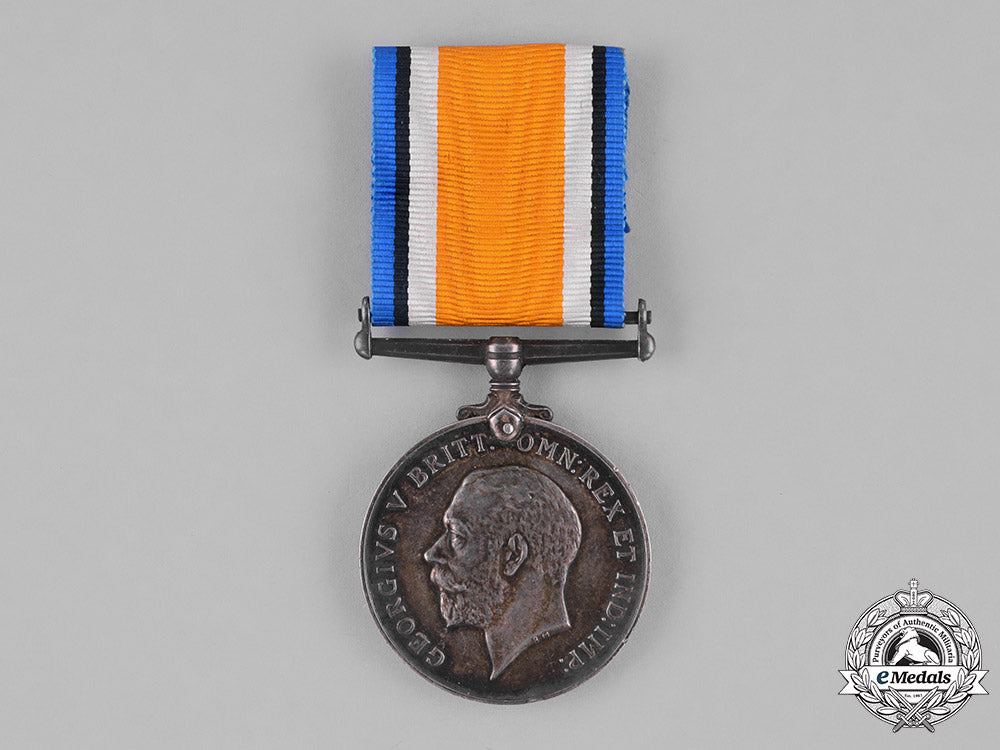
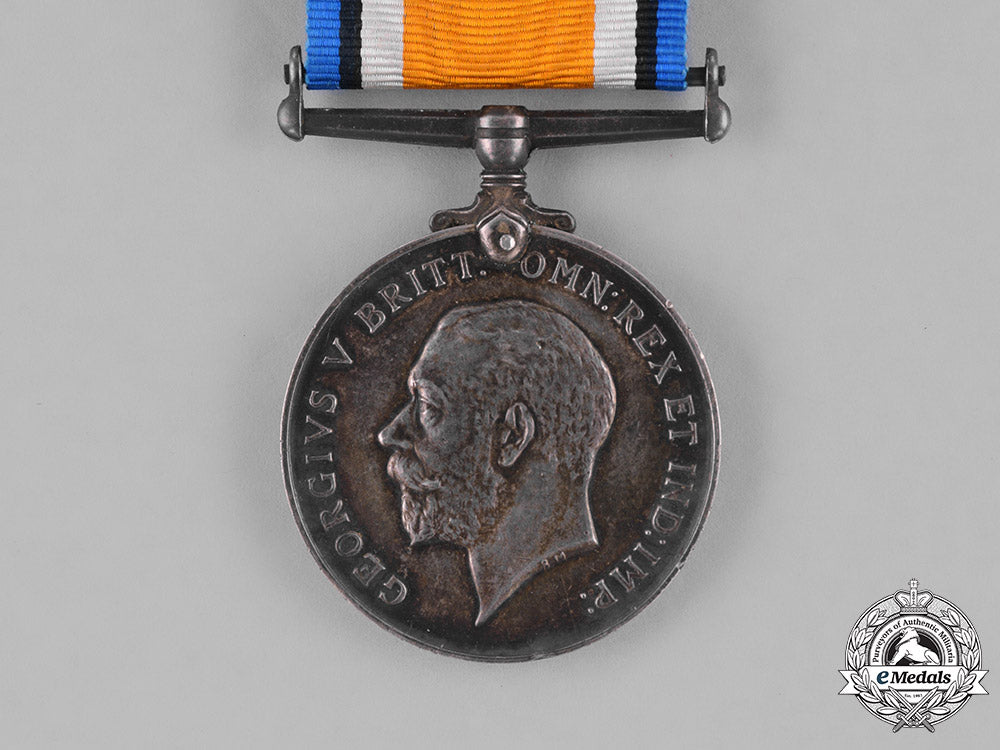
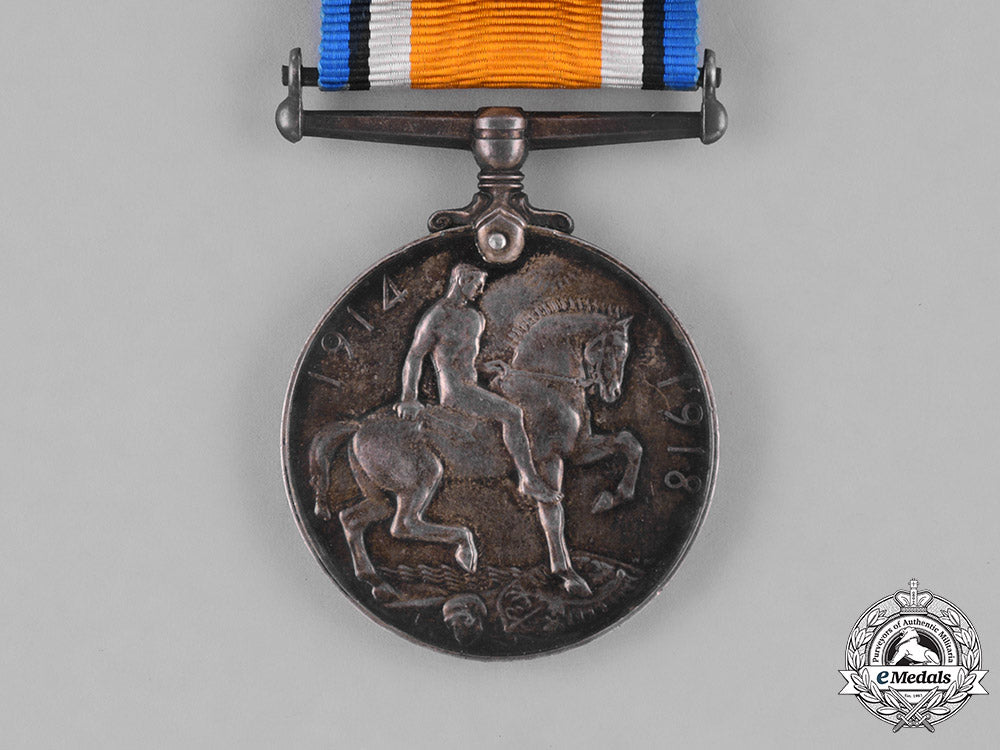
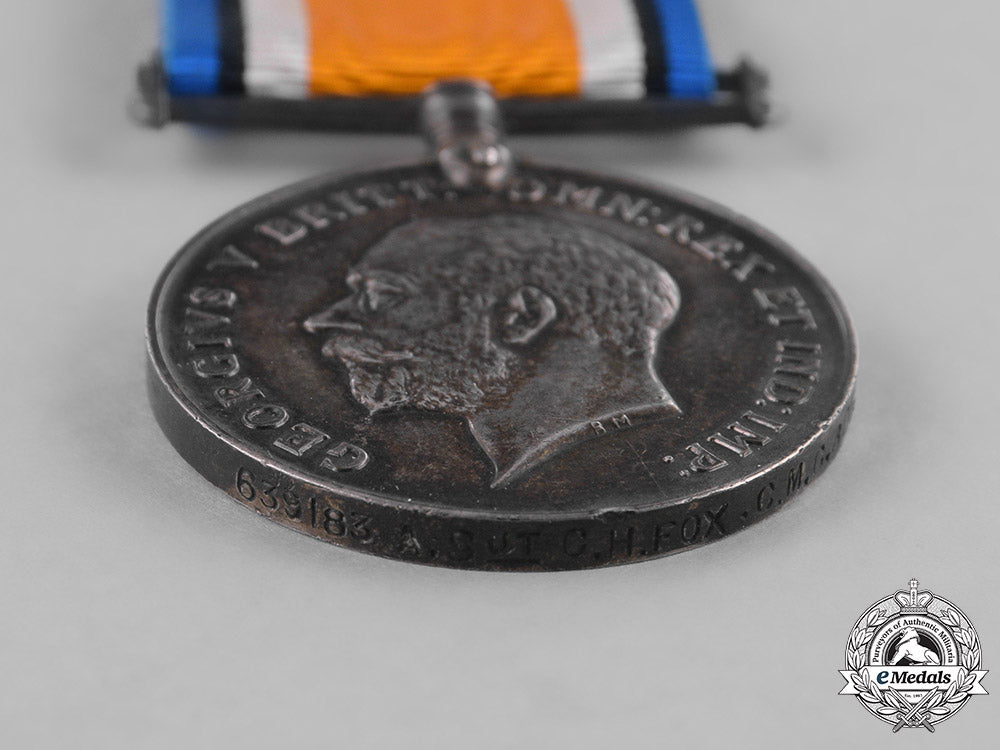
You May Also Like
Japan, Empire. A T90 Civil Defense Helmet, c.1943
W8287
Germany, SA. A Model 1933 Service Dagger, SA-Gruppe Nordsee, by Friedrich von der Kohlen
G59818
Germany, SA. A Model 1933 Service Dagger, SA-Gruppe Pommern, by Gustav Wirth
G59816
Germany, Third Reich. A Mixed Lot of Tyrolean Marksmanship Badges
G52930
Germany, SS. An Estonian Waffen-SS Volunteer’s Sleeve Shield
G50381
-
Japan, Empire. A T90 Civil Defense Helmet, c.1943
W8287
Add to CartRegular price $275 USDRegular price $0 USD Sale price $275 USDUnit price / per -
Germany, SA. A Model 1933 Service Dagger, SA-Gruppe Nordsee, by Friedrich von der Kohlen
G59818
Add to CartRegular price $980 USDRegular price $0 USD Sale price $980 USDUnit price / per -
Germany, SA. A Model 1933 Service Dagger, SA-Gruppe Pommern, by Gustav Wirth
G59816
Add to CartRegular price $980 USDRegular price $0 USD Sale price $980 USDUnit price / per -
Germany, Third Reich. A Mixed Lot of Tyrolean Marksmanship Badges
G52930
Add to CartRegular price $135 USDRegular price $0 USD Sale price $135 USDUnit price / per -
Germany, SS. An Estonian Waffen-SS Volunteer’s Sleeve Shield
G50381
Add to CartRegular price $150 USDRegular price $0 USD Sale price $150 USDUnit price / per
Do you have a similar item you are interested in selling?
Please complete the form and our client care representatives will contact you.
Sell Item












